Embark on a flavorful journey with our comprehensive guide to corned beef spices. This article delves deep into the art of selecting, blending, and cooking with spices that transform ordinary corned beef into a culinary masterpiece. From crafting your own unique spice blend to mastering the cooking techniques that ensure every bite is infused with rich, aromatic flavors, we cover it all. Whether you’re a seasoned chef or a home cook looking to elevate your corned beef game, this guide offers valuable insights, tips, and creative ideas to enhance your dishes. Get ready to explore the world of corned beef spices and bring a burst of flavor to your kitchen!
Introduction to Corned Beef Spices
Corned beef, a beloved dish with roots in Irish and American cuisine, owes much of its distinctive flavor to a carefully selected blend of spices, as detailed in this Chef’s Resource article. For a deeper understanding, explore our comprehensive guide to corned beef, covering its history, recipes, and tips. Understanding these spices is not just about throwing them into a pot; it’s an art that elevates the taste of the beef to new heights.
The Importance of Spices in Corned Beef Preparation
The journey of creating mouth-watering corned beef begins with the right spices. These aren’t just flavor enhancers; they’re the soul of the dish. Each spice in the corned beef recipe contributes a unique note, creating a symphony of flavors that’s both complex and comforting. The blend of spices used in corned beef is not just about tradition; it’s about creating a harmony of flavors that resonate with every bite.
Overview of Common Spices Used
Let’s embark on a flavorful exploration of the most common spices in corned beef. Mustard seeds, with their pungent and slightly bitter taste, add a depth of flavor that’s unmistakable. Coriander seeds offer a lemony citrus note, balancing the robustness of the beef. The sharp, piquant flavor of black peppercorns introduces a subtle heat, while bay leaves infuse a floral and slightly minty aroma, adding layers of complexity to the dish. These spices, along with others like allspice and cloves, are not just ingredients; they’re the essence of what makes corned beef so irresistibly delicious.
In the next section, we’ll dive deeper into each of these spices, uncovering their individual roles and how they come together to create the perfect corned beef spice blend.
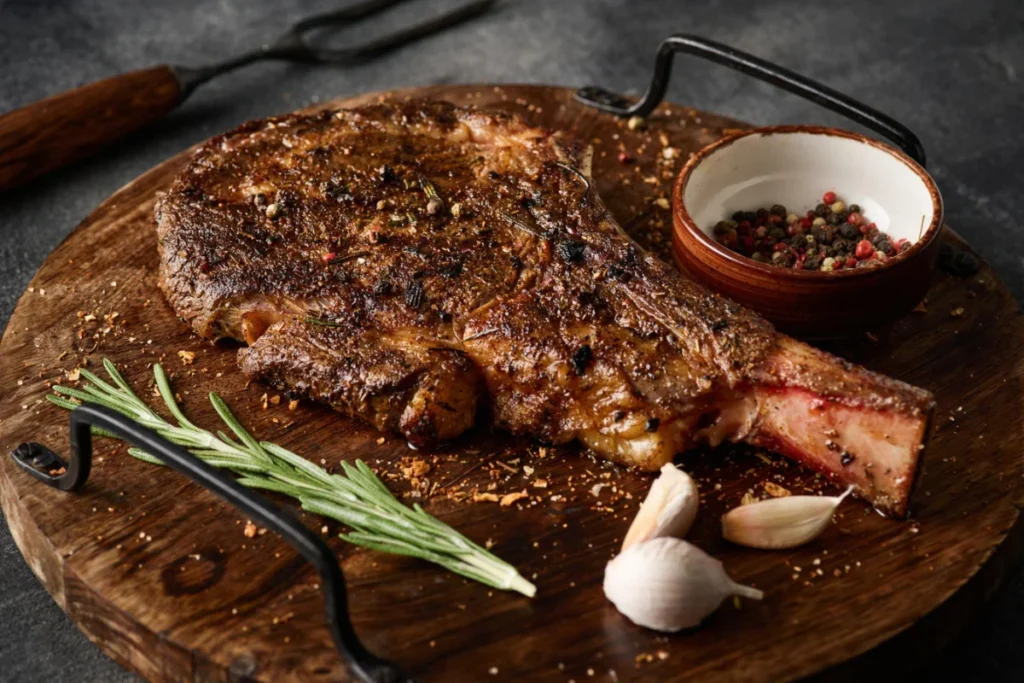
Essential Spices for Corned Beef
Diving into the heart of corned beef’s flavor, we find a collection of spices, each bringing its unique character to the dish. Understanding these spices is key to mastering the art of corned beef preparation.
The Tangy World of Mustard Seeds
Mustard seeds are a cornerstone in corned beef seasoning. Their sharp, tangy flavor adds a robust depth to the meat. When cooked, these seeds release a subtle heat, enriching the corned beef with layers of flavor. The trick is to use them judiciously; a little goes a long way in imparting their distinct taste.
Coriander Seeds: A Citrusy Touch
Next, we have coriander seeds. These tiny seeds are a powerhouse of citrusy, nutty flavors. In corned beef, they balance the heavier flavors with their light, lemony notes. The key to unlocking their full potential is to lightly crush them before adding to the spice mix, releasing their aromatic oils.
The Heat Factor: Black Peppercorns
Black peppercorns introduce a subtle, yet essential heat to the dish. They don’t just spice things up; they add a complexity that’s crucial to the overall flavor profile. The best approach is to use freshly ground peppercorns, as they retain more flavor compared to pre-ground varieties.
Bay Leaves: A Whisper of Aroma
Bay leaves are the unsung heroes in the spice mix. Their floral and slightly minty aroma adds a nuanced depth to the corned beef. These leaves are best used whole and removed before serving, as they continue to infuse the meat with their delicate flavor during the cooking process.
The Dual Nature of Allspice and Cloves
Lastly, allspice and cloves bring a sweet and spicy dimension to the mix. Allspice, with its hints of cinnamon, nutmeg, and clove, adds warmth, while cloves offer a pungent sweetness. These spices should be used sparingly to avoid overpowering the other flavors.
In the next part, we’ll explore how to craft your own corned beef spice blend, ensuring each spice shines through in harmony.
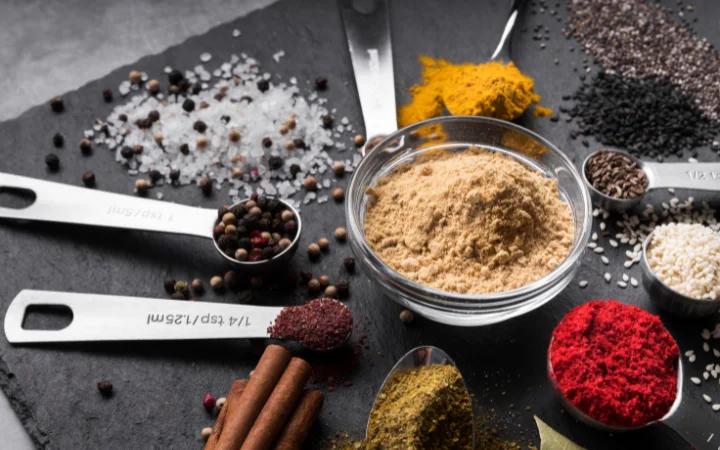
Crafting Your Own Corned Beef Spice Blend
Creating your own corned beef spice blend is an exciting journey into the world of flavors, and you can find inspiration with these homemade corned beef seasonings from Chili Pepper Madness It’s about more than just mixing spices; it’s about crafting a signature blend that will give your corned beef a unique and memorable taste, as explored in this guide on Corned Beef Spices (HOMEMADE CORNED BEEF SEASONINGS) by Foodie and Wine
Building Blocks of Your Spice Mix
Start with the basics: mustard seeds, coriander seeds, black peppercorns, bay leaves, allspice, and cloves. A balanced mix might include 1 tablespoon of mustard seeds, 1 tablespoon of coriander seeds, 1 teaspoon of black peppercorns, 2 large bay leaves, 1/2 teaspoon of allspice, and 1/4 teaspoon of cloves. Toasting the seeds and peppercorns is a crucial step. It releases their essential oils, intensifying the flavors. After toasting, grind them coarsely. This coarse grind ensures that each bite of corned beef has a burst of flavor. Mix in the bay leaves, allspice, and cloves, and your spice blend is ready.
Finding the Perfect Flavor Balance
Creating a balanced spice blend is an art. Start with equal parts of each spice and adjust based on your taste preferences. Remember, spices like cloves and allspice are potent, so use them sparingly. As you mix, taste frequently. The perfect blend should have a harmonious balance of heat, sweetness, and aromatic notes. Don’t be afraid to experiment, and for guidance, check out this MasterClass on creating custom spice blends. Sometimes, adding an unexpected spice like cinnamon or star anise can bring a delightful twist to your blend.
Preserving Your Spice Creation
Storing your homemade spice blend correctly is crucial for maintaining its potency. Keep it in an airtight container in a cool, dark place. This way, the spices will retain their freshness for up to six months. Label your spice mix with the date it was made to keep track of its shelf life.
Personalizing Your Spice Blend
Personalizing your spice blend is what makes homemade spices special. Consider the flavors you love. Do you prefer a spicier kick? Increase the black peppercorns. Love a citrusy note? Add more coriander. This personal touch will make your corned beef uniquely yours.
Tailoring Your Blend to Taste
Don’t limit your homemade spice blend to just corned beef; it can also add a unique flavor to dishes like our Instant Pot Chicken Gnocchi Soup.. It can be a versatile addition to many dishes. Sprinkle it on roasted vegetables, use it in marinades, or add it to soups and stews. Its robust flavor can enhance a variety of recipes.
Crafting your own corned beef spice blend is a rewarding experience. It allows you to play with flavors and create something that suits your palate perfectly. Plus, it adds a personal touch to your cooking, making each dish uniquely flavorful.

Utilizing Spices in Corned Beef Cooking
The true potential of corned beef spices is unleashed in the cooking process. Here, we delve into techniques to maximize the flavor infusion from these spices, ensuring your corned beef is not just tender, but also rich in taste.
Brining with Spices
Brining is the foundational step in preparing corned beef. A basic brine includes water, salt, sugar, and your homemade spice blend. The brine acts as a vehicle, carrying the flavors of the spices deep into the meat. For an effective brine, ensure the beef is fully submerged and refrigerated during the brining process. This slow infusion over several days allows the spices to impart their full flavor and tenderize the meat.
Slow Cooking and Spice Infusion
After brining, slow cooking is essential, but for those interested in exploring other cooking methods, our ultimate guide to Sous Vide corned beef offers insights into achieving perfect texture and flavor.. This method allows the spices to further permeate the meat. Place the brined beef in a slow cooker, add a portion of your spice blend, and cook on low heat. The slow, gentle cooking not only tenderizes the beef but also allows the spices to meld and deepen in flavor, as outlined in these slow cooker tips from Bon Appétit, as outlined in these slow cooker tips from Bon Appétit. This process can take several hours, but the result is a corned beef that is tender, flavorful, and aromatic.
Adjusting Spice Levels to TasteSerious Eats article
As the corned beef cooks, periodically taste the broth. This will give you an idea of the spice levels. If you prefer a more robust flavor, add more of your spice blend. Conversely, if the flavor is too intense, you can dilute it by adding more liquid. Remember, the spices will continue to infuse the meat as it cooks, so it’s better to start with less and add more as needed.
The Role of Spices in Texture and Color
Spices in corned beef do more than flavor the meat; they also contribute to its texture and color. The brining process, aided by the spices, helps the beef retain moisture, resulting in a juicier texture. Additionally, some spices, like mustard seeds and coriander, can impart a subtle color to the meat, enhancing its visual appeal.
Experimenting with Cooking Methods
While slow cooking is traditional, don’t be afraid to experiment with other cooking methods, as discussed in this Serious Eats article. Braising or pressure cooking can also yield delicious results. Each method interacts differently with the spices, offering unique variations in flavor and texture.
Utilizing spices in corned beef cooking is a blend of science and art. It’s about understanding how flavors develop over time and how different cooking methods can enhance or alter these flavors. With the right approach, your corned beef will not only be a treat for the taste buds but also a testament to your culinary skills.
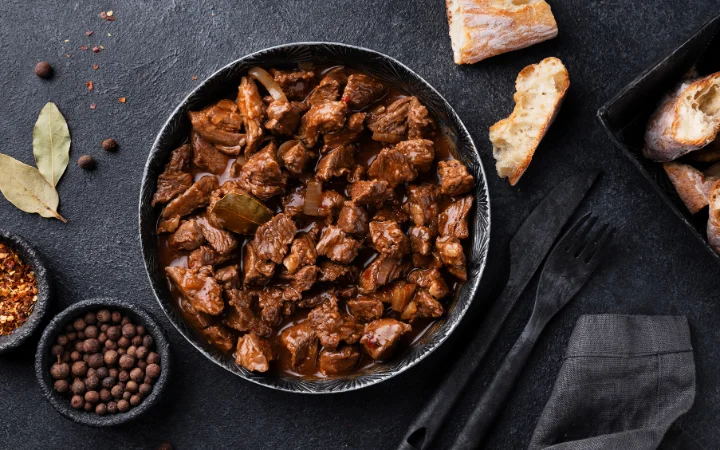
Innovative Uses of Corned Beef Spices
Corned beef spices are not just for corned beef! Their rich, complex flavors can enhance a variety of dishes. Let’s explore some creative ways to use these spices outside the traditional corned beef context.
Beyond Corned Beef – Other Culinary Applications
Think beyond the brisket. These spices can add a unique twist to many dishes. For instance, try adding a pinch of your corned beef spice blend to a beef stew or pot roast for an extra layer of flavor. The aromatic qualities of the spices can also complement vegetable dishes, like roasted root vegetables, lending a warm, earthy note.
DIY Spice Rubs and Marinades
Your homemade corned beef spice blend can be an excellent base for DIY rubs and marinades. Mix it with ingredients like brown sugar, garlic powder, and a bit of oil to create a rub for grilling meats. Alternatively, blend it with vinegar and oil for a flavorful marinade that works wonderfully with chicken or pork.
In the next part, we’ll delve into the health benefits and considerations of the spices used in corned beef, offering insights into how these ingredients can contribute to your overall well-being.
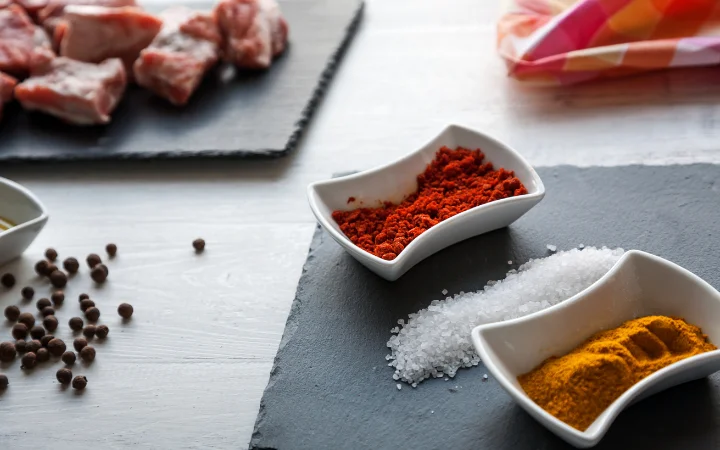
Health Benefits and Considerations of Corned Beef Spices
While corned beef spices add flavor and aroma to dishes, they also offer various health benefits, as detailed in this Healthline article. However, it’s important to consider dietary restrictions when using them. Let’s delve into the nutritional aspects of these spices.
Nutritional Benefits of Key Spices
- Mustard seeds are known for their anti-inflammatory properties and are a good source of selenium, which is beneficial for bone health.
- Coriander seeds can aid digestion and have antioxidant properties.
- Black peppercorns enhance nutrient absorption, especially that of selenium, vitamin B, and beta-carotene.
- Bay leaves contain compounds that help in managing diabetes and improving heart health.
- Allspice and cloves are rich in antioxidants, which help in fighting free radicals and reducing inflammation.
Considerations for Dietary Restrictions
When using corned beef spices, it’s important to consider individual dietary needs. For instance, those with a mustard allergy should avoid mustard seeds. Similarly, people with certain gastrointestinal conditions might need to limit spicy foods, including black peppercorns. Always tailor your spice use to suit dietary restrictions and preferences.
In the next part, we’ll answer some frequently asked questions about corned beef spices, providing expert answers to common queries.
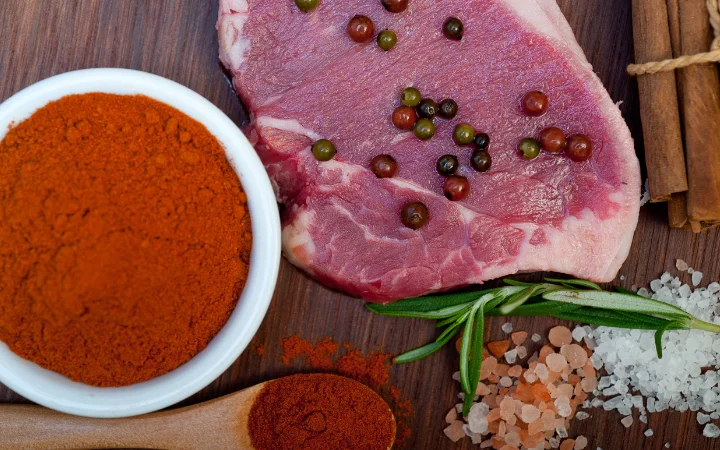
Frequently Asked Questions About Corned Beef Spices
In this final section, we address some common questions about corned beef spices, providing clarity and additional insights to help you in your culinary endeavors.
Can I substitute one spice for another in the corned beef spice blend?
Yes, you can substitute spices based on availability and preference. For instance, if you don’t have coriander seeds, you might use ground coriander. However, remember that each spice has a unique flavor, so substitutions can slightly alter the taste of the final dish.
How long should I brine corned beef?
Ideally, corned beef should be brined for at least 5 days. This duration allows the meat to fully absorb the flavors from the spices and the brine, resulting in a more flavorful and tender corned beef.
Are there any spices to avoid if I’m on a low-sodium diet?
If you’re on a low-sodium diet, be mindful of the amount of salt used in the brine. You can reduce the salt or look for low-sodium alternatives. However, this might affect the traditional flavor and preservation qualities of corned beef.
Can I reuse the corned beef spices for another batch?
It’s not recommended to reuse spices from one batch of corned beef for another, as they lose potency and flavor after cooking. Always use fresh spices to ensure the best flavor.
How can I make my corned beef spices more or less spicy?
Adjust the heat by varying the amount of black peppercorns or adding red pepper flakes for more spice. For a milder flavor, reduce the peppercorns and avoid additional spicy ingredients.
This comprehensive guide on corned beef spices not only enhances your understanding of each spice’s role but also opens up new possibilities for culinary creativity. Whether you’re sticking to the traditional recipe or experimenting with new flavors, the world of corned beef spices is rich with opportunities for exploration and enjoyment.

